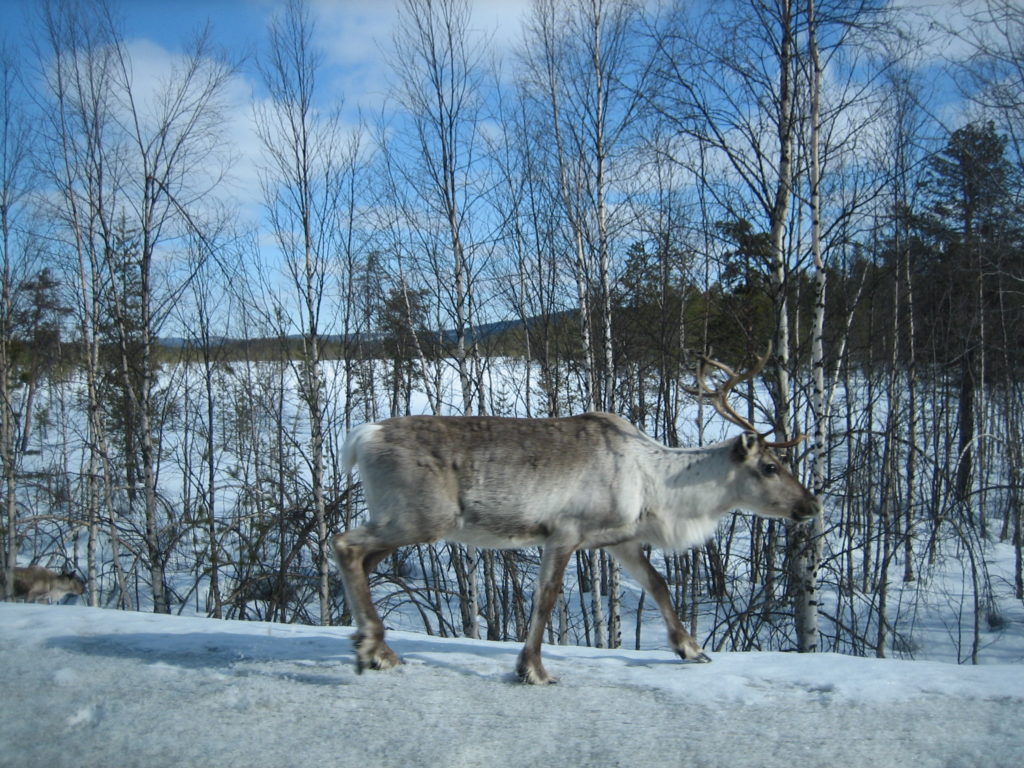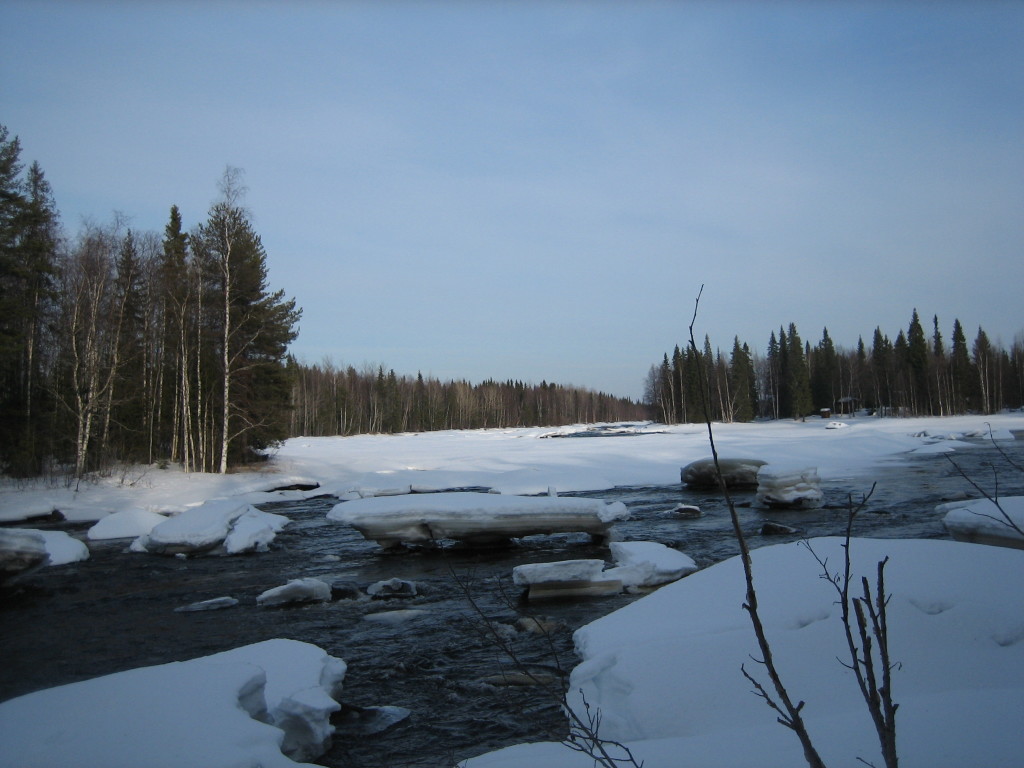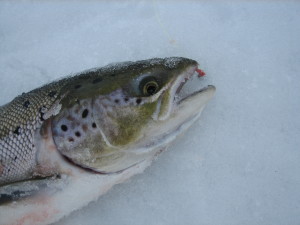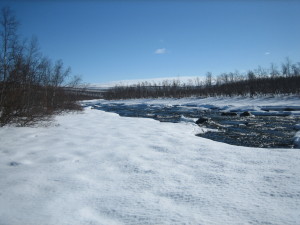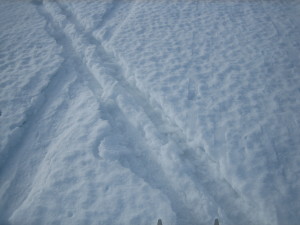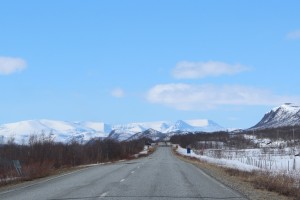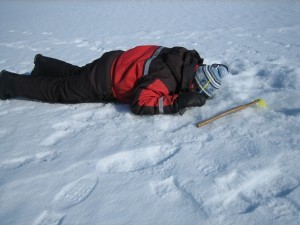In the “arm” of Finland there are the highest fells of Finland and the river Torniojoki/Muoniojoki with extensions runs all the way along the border to Sweden from Kilpisjärvi in north to Tornio in south.
To drive to our accommodation took us 5 hours from Rovaniemi with a short stop in the village of Muonio to pay a visit to a nice little shop of a friend of mine, Pikku Puotinen.
After some arrangements concerning too much snow on the parking lot near the cottage, we moved to the place for ice-fishing near the fell Lammasoaivo. 
During the stay the weather conditions varied from absolutely fantastic, warm, sunny days to cold, windy and also one rainy day The temperatures varied from -10 degrees Celsius to +5 degrees. In the beginning of the expedition the snow was hard, really hard. Even about half a meter deep. The reindeer could easily walk above on the snow. But in the end of our visit the rainy day had destroyed the hard snow completely and the reindeer as well as we had difficulties to walk in the forest.
We moved on skies for some kilometers every day and we could also in the beginning enjoy the hard snow and the easiness to go skiing in the nature, where the depth of the snow was about half a meter. The last day was really a trial on skis, but we made it, with a sweaty result.
Regarding the fishing, the ice was 70 cm thick, there was hardly any snow on the ice and we got a lot of greylings and some whitefish. The amount of fish was really more than expected. My unluck, although, was the trout I had on my hook for several minutes, but finally, as I almost got it up on the ice, it succeeded to free itself from the hook! The disappointment lasted for the whole day. This trout was probably even bigger than the one I got in the year 2013 weighing 1,5 kilo.
Here is a picture of the trout in 2013. Just for my own comfort, to forget the one I lost this year…..
The greylings were many and some were really big. Some nice whitefish I also got.
Every day inbetween we lit a fire in different places depending on from which direction the wind was blowing at the time, and fried some sausages and had something warm to drink.
At times when the fish was not eating, I watched the nature and, as usual, the little White-throated dipper (Cinclus Cinclus) in the rapid. Impossible to get a good picture of it with my little camera. On the snow I also found a “runway” for swans. Two swans had visited the ice during the night and left the marks where they took off again.
Otherwise the spring had not arrived yet to this area and very few migratory birds had so far returned to Lapland. Some flocks of Snow buntings (Plectrophenax nivalis) were flying around from the south bank of the river to the north bank. I missed the Common crane (Grus grus).
The rainy day we spent with a visit to Kilpisjärvi, the northernmost village near the place where the borders from Sweden, Norway and Finland meet. Even if it was raining on the fishing place 40 km from Kilpisjärvi, the sun started to shine as we arrived to Kilpisjärvi.
An interesting visit to the Kilpisjärvi nature center provided me with information about the nature and the people of the area around Kilpisjärvi. After that we had a delicious lunch at the Kilpisjärvi Retkeilykeskus before we returned to ice-fishing.
Very tired, but content we finally ended this year’s expedition to the Upper North of Finland. So far I have never been disappointed with the ice-fishing experiences in between the fells of Sweden and Finland. And so far the weather has always been, at least, partly sunny and not too cold for ice-fishing.
A visit to this place in the summer time is on my wish list.



